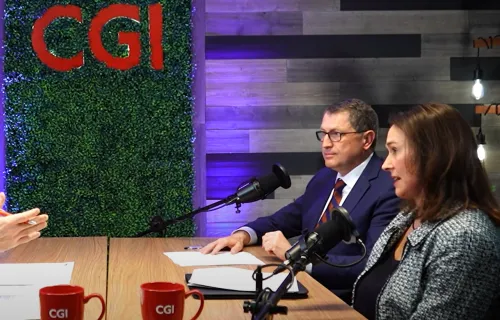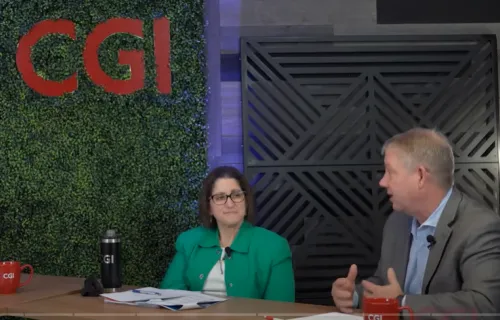Enterprise content management (ECM) has been around for two decades. However, the industry has yet to achieve a standard of success. Some deployments ultimately fail; many of those that do succeed languish due to low levels of adoption. I recently gave a talk at ARMA’s InfoCon conference about these challenges.
A key part of the problem is the one-size-fits-all approach. ECM began with the concept that one platform can meet all the content needs of an organization. Over time, it became clear that web content management (WCM) did not fit in the ECM world, so it is no longer part of the ECM platform stack. More recently, the industry recognized two types of content challenges for ECM platforms to address: transactional and collaborative.
This was a huge step forward, as many ECM platforms attempt to address both challenges. However, it overlooks a third, equally important kind of content management: archival.
Transactional content supports digital transformation
In 2017, Gartner replaced the term ECM with “content services” in its Magic Quadrant, catching the attention of the ECM industry. It meant that Gartner was finally recognizing that the traditional ECM platform is best for transactional content. The hallmarks of these platforms are high scalability, robust information modeling, and rules automation accessible through application programming interfaces (APIs).
The key characteristics of a transactional ECM platform are:
- Process-centric: All content supports a process, allowing the metadata and rules to manage content the organization already understands well.
- Outbound APIs: APIs expose content to other applications; people then use it to do their work.
- Limited user interface (UI): Administrators, almost exclusively, are the only ones who use the built-in UI.
- Business entity-focused: All metadata and business rules are tied to business entities, such as clients and constituents.
Digital transformation is the sweet spot for using modern ECM platforms. At a high level, every digital process is transactional and revolves around storing content in relation to business entities. Exposing ECM capabilities using content services APIs allows for the delivery of content to every business system.
Collaborative content supports larger efforts
One of the challenges over the history of ECM is that ECM vendors do not always understand how people work. Vendors know back-office and regulatory requirements quite well but struggle with creating an effective user experience (UX). This is because it usually falls to IT or upper management to communicate an agency’s needs to the vendor. They are preoccupied with business needs, and sometimes consider UX as an afterthought at best.
A good collaborative system puts the UX first, and is:
- Person-centric: The goal is a system that people want to use to get things done without burdensome restrictions.
- Inbound APIs: Management APIs apply business rules defined externally to content.
- Strong user interface: If people do not find the system easy to use, they are likely to abandon it and shift back to email.
- Project-focused: Every collaboration channel has a purpose that is either ongoing or defined by the need to come together to complete a task or project.
A good rule of thumb to follow is this: If all the information governance capabilities an organization requires are built in to an ECM system, its UX will be insufficient for successful adoption. Information governance features always impose limits to how people work. Focus on the user experience, even at the expense of easier management, to encourage people to use the system.
Managing information debt
It is easy to put off managing archival content when more immediate content challenges demand attention. This oversight creates information debt, which includes archival content along with any other information stored in inactive information systems. Organizations need to address information debt by migrating, archiving or purging it. Often, organizations find they have no need to continue to work with the information, but they need to retain it to meet regulatory, operational or records retention requirements.
These characteristics define archival ECM solutions:
- Records-centric: Everything is a record; agencies have reasons for keeping the records and need to manage them for as long as that reason applies.
- Minimal API: Interaction through APIs is rare unless an external system is managing the record policies or automatically adding content to the system.
- Search-centric user interface: A traditional ECM interface serves as a search mechanism for locating old content and an administrative interface for records managers.
- Categorization-focused: Agencies must categorize their content accurately so that they can ensure they keep it for the proper duration as required by law and regulation.
The key feature of an archival ECM platform is search, and the metadata that makes search effective. Archival content can be placed within a content services platform or reside in a dedicated archival ECM system. The key is that the organization needs to make a conscious decision about how to best manage content.
Choosing the right ECM platform
Many organizations have software that, properly used, can address their content challenges. Understanding what you have and where you are going is key to charting a path to success. Taking the time to assess what you have, what you need and where there is overlap is a key first step.
If you need help making that determination, CGI can help. If you already know where you need to go, we have experience helping organizations get there, no matter their starting point. Remember that solving your content challenges is a journey and you will need to adjust your course many times. We help you navigate a course to success by providing impacts you can act on.
For more on CGI’s capabilities, read our Enterprise Content and Records Management page.





